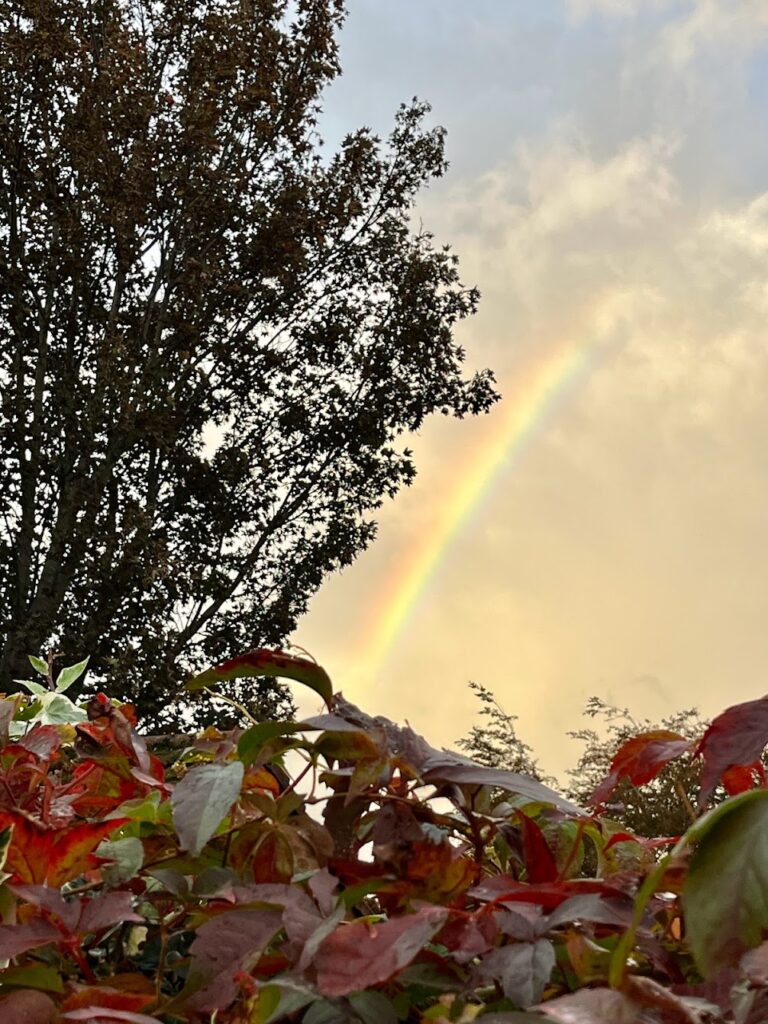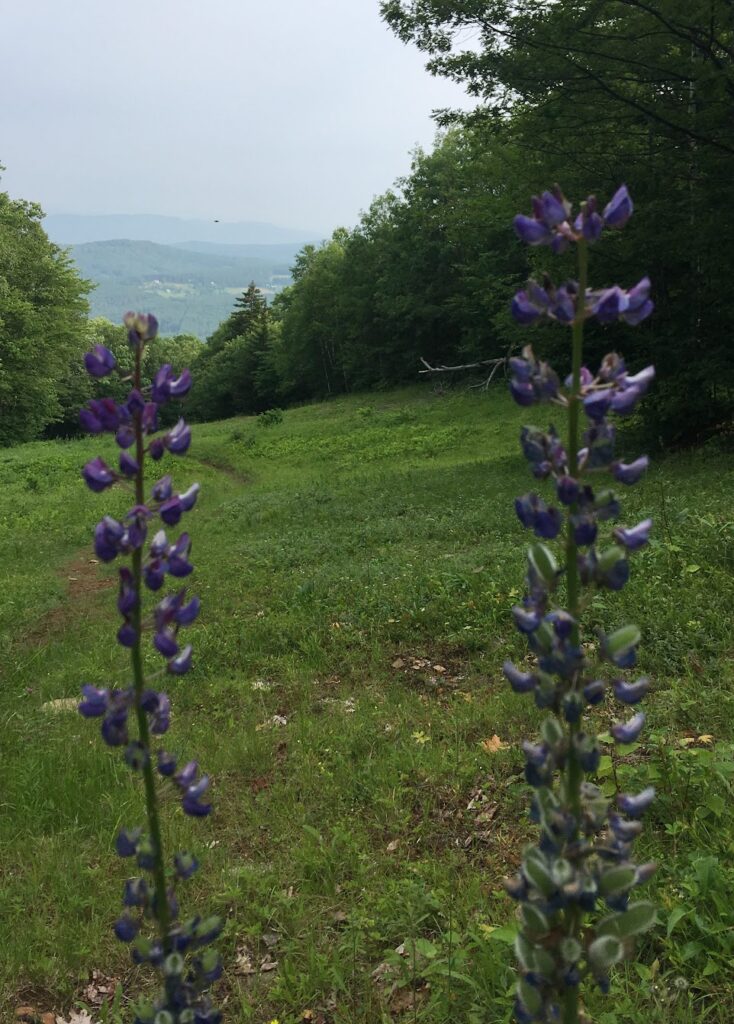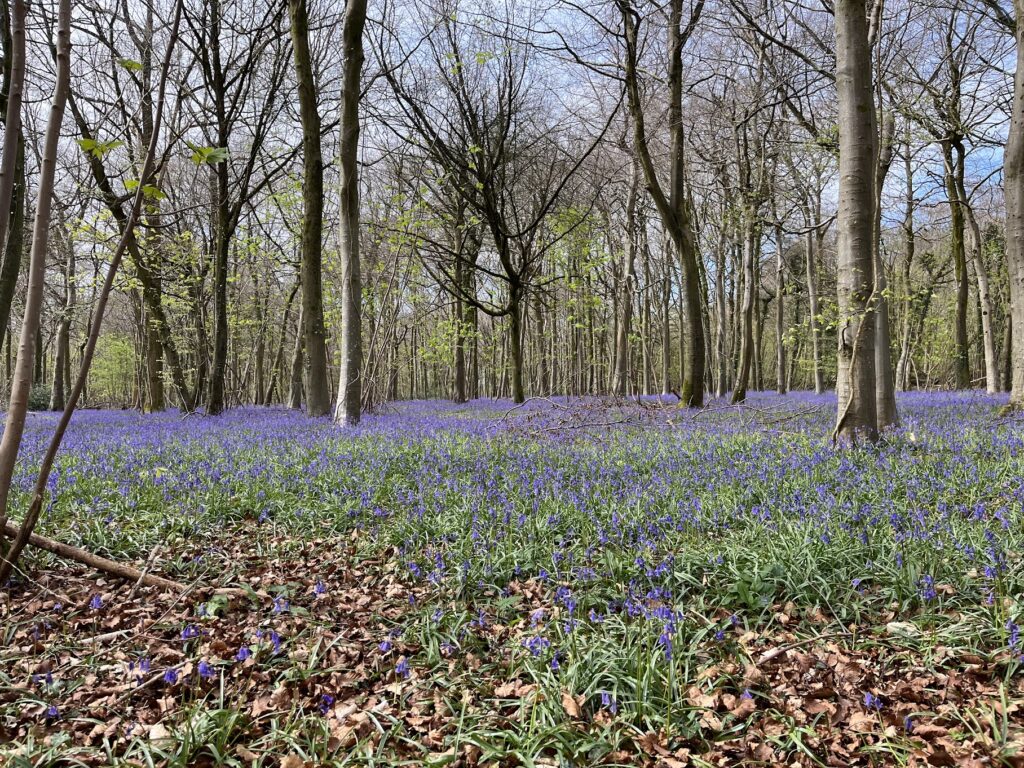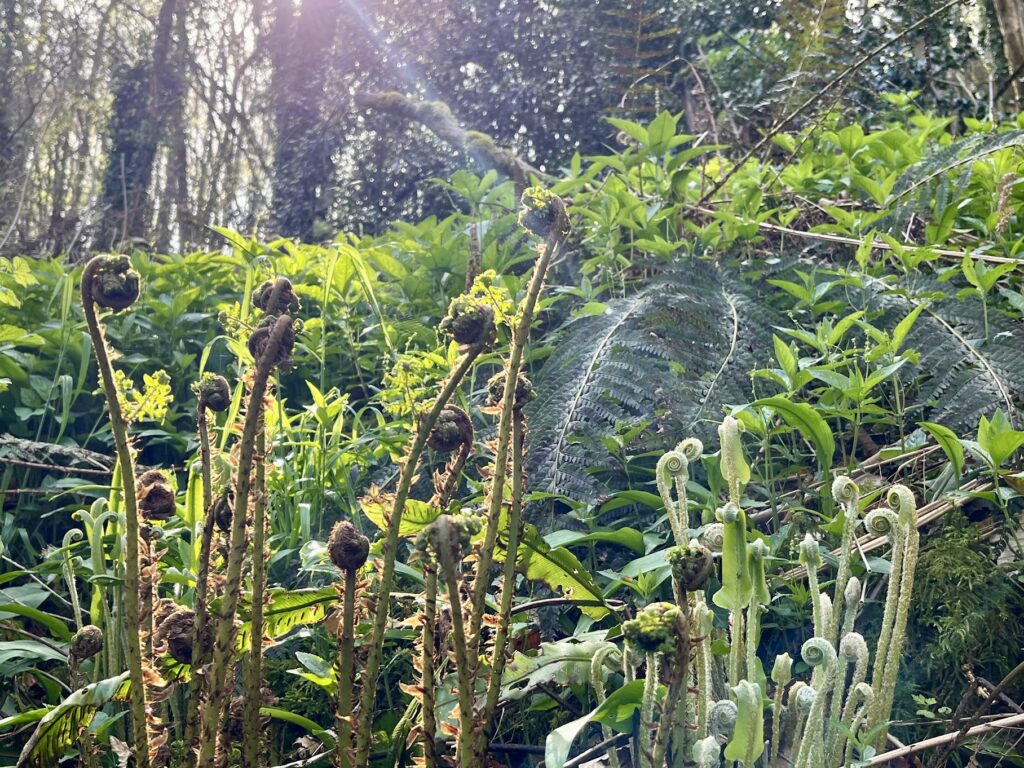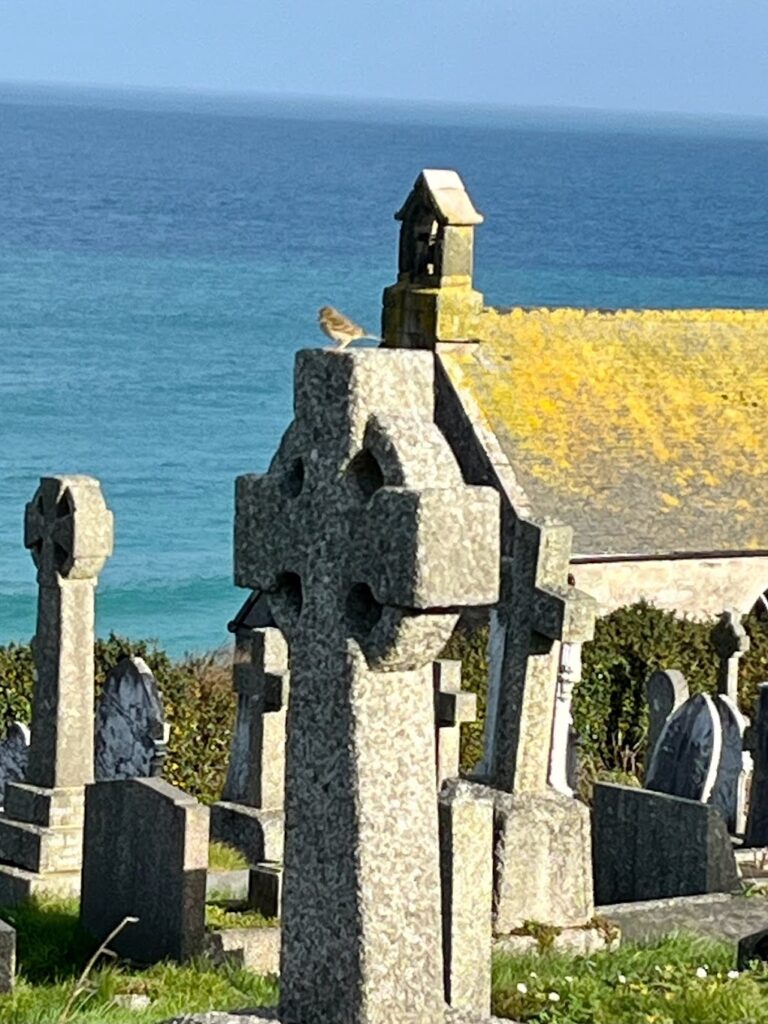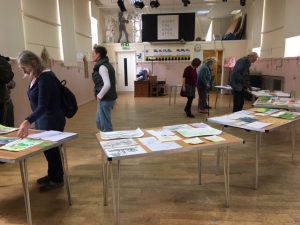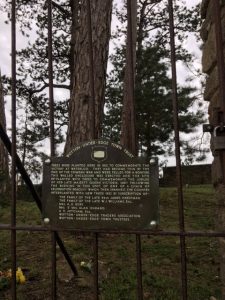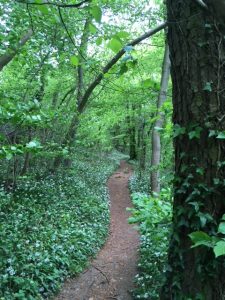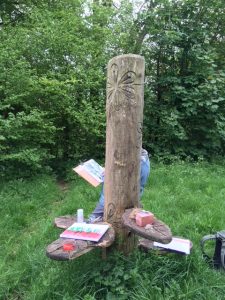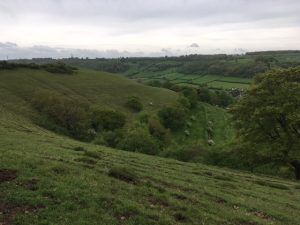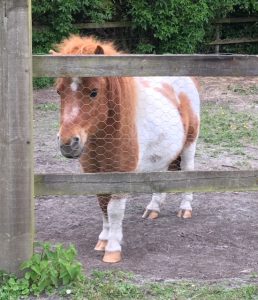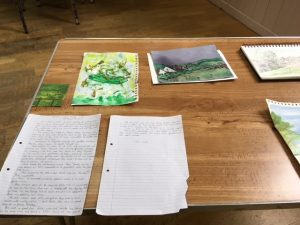This Week’s Bit of String: Jewelled hedgerows and painted roundabouts
The mini roundabout by Tesco has received fresh stripes. St. George’s red cross is now painted over the white, courtesy of an undoubtedly patriotic local citizen. I don’t think it makes much difference to how anyone drives or feels. Do some British citizens in this fairly homogenous town feel safer because someone spraypainted the emblem of a Roman soldier of Greek descent whose worship started in Palestine? Whatever works for them, I guess.
What surprised me was the title given to this campaign of painting and flying loads of extra English flags. “Raise the colours.” Before I remembered the military and scouting origins of the phrase, I thought it odd. The English flag isn’t spectacularly colourful.
As an immigrant (21 years living in Britain this past week!), I have my own perspective on the UK and its colours. They are sometimes dull grey skies and the stifling black or navy blue of school uniforms that I see at work. But they started for me with red double decker buses and purple cross-country trains, the pulsing bright lights of Student Union discos and the green of grass that grows through the winter.
Every late August, when I return to Gloucestershire from my summer visit to my family in New England, the colours of old England are deep purple berry-black and deceptively soft stinging nettle-green. I forage in the hedgerows and make blackberry-elderberry syrups and jam.
This year, the hedgerows are particularly festooned with colour. Dark blue sloes and so many little red hawthorn berries, you can barely see the leaves. Apparently, drought can stress trees into making extra fruit in a more desperate bid to pass on their genetic material. Hopefully they don’t feel too downhearted that some of their DNA is going into a crumble. It’s doing all kinds of good!
Full Spectrum
Ask my five and a half year old niece her favourite colour and she will tell you it’s rainbow. I didn’t know that was an option when I was a kid.
I hope no one nitpicks her and tells her rainbow isn’t one colour, it’s all of them. Of course it is, that’s why people are so enchanted by rainbows. Shining colours melded together more closely than a hedgerow, with far more beautiful range than a red cross on a white background. We all have an innate love of mixture and brightness.
In my dining room, next to the spiderplant grown from a student’s gift and a felted leaf garland crafted by another student, a prism hangs. It is no tear-shaped slip of a thing, it’s a weighty diamond capable of pitching a whole swathe of rainbows.
My aunt Laurel gave it to me when I was struggling as an adolescent. “Sometimes you just need more rainbows in your life,” she told me, her voice catching on her compassion.
Three days ago, Laurel died suddenly of a heart attack in her Vermont home. On that side of the ocean, my family rallies to honour her and to support my cousin. On this side of the ocean, a friend gives me yellow gladioli at work and another drops an orange-papered Tony’s Chocolonely bar through my letterbox. British colours at work again.
Making Rainbows
More vibrant fruit yields can come from jeopardy, and rainbows don’t happen without storms. My aunt Laurel had her share of storms, but she absolutely sparkled for us.
She loved the lupins that grew in the median strip of Highway 91, she loved candied almonds and jewelry. She gave me my first CD of Les Miserables, and instigated the nerf gun battle that ended in my husband proposing. She invented her own evil twin to blame pranks on, and encouraged all of us to do the same. She was the source of many a thoughtful gift, and constantly opened her home to us, no matter what annoying phase we were going through.
When my baby was born (I mean, they were a baby then…) she was the one with me in the delivery room. Despite the tragedy and horror of the terrorist attacks that day, Laurel always reminded me how she couldn’t stop smiling after the birth. She strove to see the world through the most hopeful prism, and sometimes that’s awfully hard.
Even better than a prism, she’s left us with her wonderful son, my cousin, who will now be even more part of my immediate family. It’s excruciating to know she won’t be there the next time I get back to see my family. But she’s left us so much to be grateful for, especially an undying impression that no person or place is as dull as just two colours.
Wishing you rainbows this week, friends, and hopefully not too many storms.
